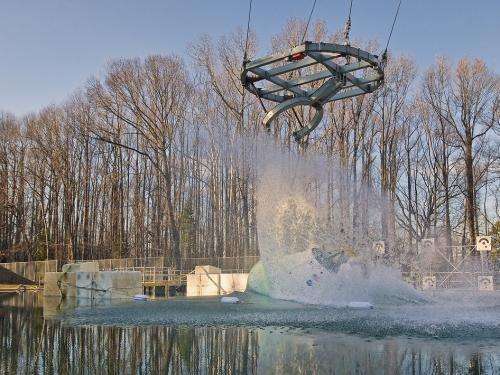Testing Orion space capsule

(PhysOrg.com) -- Testing continues at NASA Langley Research Center as the 18,000-pound (8,165 kg) Orion test article took its eight and final splash of the year into the Hydro Impact Basin on Dec. 13. Orion, the next deep space exploration vehicle, will carry astronauts into space, provide emergency abort capability, sustain the crew during space travel, and ensure safe re-entry and landing.
The testing, which began in this summer, simulates different water landing scenarios and takes into account different velocities, parachute deployments, entry angles, wave heights and wind conditions that Orion may face when landing in the Pacific Ocean. The Dec. 13 test simulated all parachutes being deployed with a nominal re-entry angle into steady seas. The capsule was at a 28 degree angle and traveled 20 mph (32.2 kph) before splashing into the basin.
This test series also takes into account conditions that may result in the capsule landing in an inverted position, which tends to occur more frequently with the higher horizontal velocities and impact angles. As was the case with the Apollo vehicle, the Orion flight design will feature an onboard uprighting system to restore the vehicle to an upright orientation prior to recovery.
Orion remained upright upon landing into the basin.
Provided by JPL/NASA


















